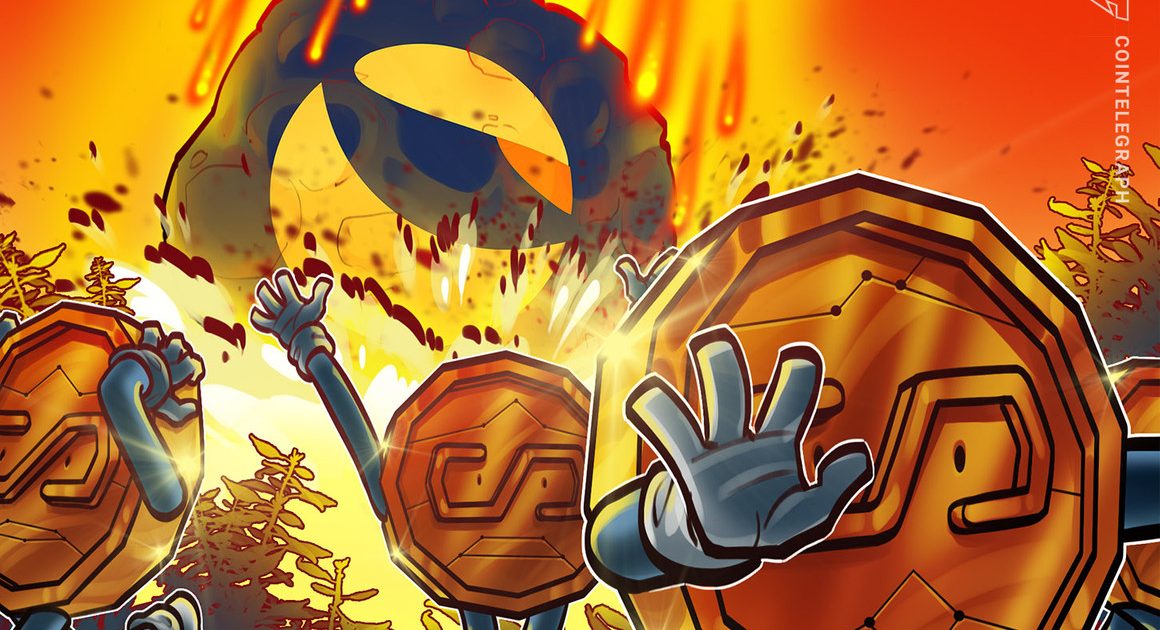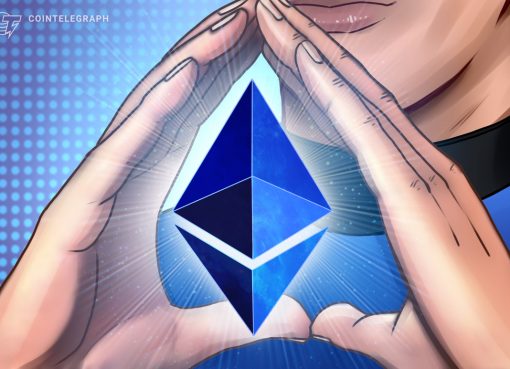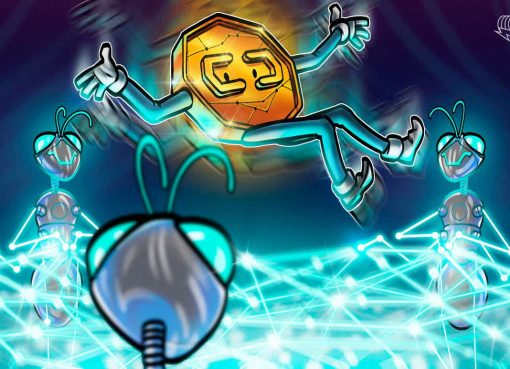The spectacular implosion of the Terra ecosystem in mid-May left the crypto enterprise scarred. Though there have been some brave critics who understood merely how skinny the razor’s edge was for TerraUSD (UST) — now TerraUSD Main (USTC) — I ponder it’s protected to say that almost all people didn’t rely upon Terra to fail so fast, so dramatically and so utterly irrevocably.
I’m scripting this on account of the Terra group is voting on a plan to restart some form of Terra 2.0 — a plan to salvage the layer-1 ecosystem with out the UST stablecoin. The earlier Terra, now to be usually typically referred to as Terra Main, is completely lifeless. An ill-fated try to backstop UST holders printed trillions of LUNA tokens, destroying their value and at last jeopardizing the safety of the group itself.
The entire wipeout of $50 billion in value seems to have made people resolve as quickly as and for all that algorithmic stablecoins cannot work. Nevertheless I ponder it’s important to have an additional nuanced understanding of why the distinctive LUNA failed and the way in which during which whereby others could also be taught from its applications.

Related: Terra 2.0: A crypto enterprise constructed on the ruins of $40 billion in patrons’ money
Contents
Stablecoins: New resolve for an age-old concept
The time interval stablecoin largely evokes United States dollar-pegged currencies that intention to maintain up up a $1 value. Nevertheless it’s important to keep in mind that that’s largely a matter of consolation. The identical mechanisms underpinning in the mean time’s USD stablecoins could also be utilized to create money which is extra prone to be pegged to the euro, gold, even Bitcoin (BTC), Nasdaq futures, or some particular stock, resembling Tesla (TSLA).
It’s moreover attention-grabbing to note that stablecoins shouldn’t really a model new crypto thought. Presently’s stablecoin designs are intently related to each how money works beneath a gold commonplace — e.g., Maker’s Dai is a declare to a tough collateral identical to early banknotes have been claims to a gold vault — or they’re a replica of pegged currencies such on account of the Hong Kong dollar.
The HKD is a terribly attention-grabbing occasion in all of this resulting from it’s virtually your run-of-the-mill “algorithmic stablecoin.” It’s pegged to the U.S. dollar, even when not at a 1:1 ratio, and the HK central monetary establishment makes use of its big reserves to keep up up HKD’s value in a well-defined ratio by buying for and promoting it available on the market throughout the market. The latest audits place the Hong Kong reserves at $463 billion, which is six circumstances the HKD in speedy circulation and just about half of its M3, the broadest definition of “money” that moreover accommodates not immediately liquid property (like locked monetary establishment deposits).

Really the one motive why HKD is technically not an algorithmic stablecoin is that there is a central monetary establishment conducting market operations. In decentralized finance (DeFi), the central monetary establishment is modified by an algorithm.
Related: UST aftermath: Is there any future for algorithmic stablecoins?
Terra ain’t no HKD, though
Conflating Terra with the algorithmic stablecoin home, often, fails to see why Terra collapsed as onerous on account of it did. It’s important to understand merely how fragile the Terra protocol design was. In a nutshell, UST was “collateralized” by LUNA, the gasoline token of the Terra blockchain. Since there was a fairly secure DeFi and nonfungible token ecosystem developed on Terra, the LUNA token had some inherent value that helped improve the preliminary present of UST.
One of the best ways whereby all through which the mechanism labored was, in principle, just like HKD. If UST traded above $1, prospects could buy some LUNA and burn it for its dollar value in UST. Crucially, the system assumed that UST was value $1, so the LUNA burner can merely promote the UST available on the market inside the marketplace for, say, $1.01 and make a income. They may then recycle the earnings into LUNA, burn it as rapidly as additional, and proceed the cycle. Lastly, the peg would possibly very successfully be restored.
If UST traded beneath $1, the reverse mechanism helped backstop it. Arbitrageurs would buy a value range UST, redeem it for LUNA at a worth of 1 UST equaling $1, and promote these tokens available on the market throughout the market at a income.
This system is sweet at defending the peg in widespread circumstances. One state of affairs with Dai, as an illustration, is that it’s going to possibly’t be immediately arbitraged for its underlying collateral. Arbitrageurs ought to “hope” that the peg stabilizes to make a income, which is the primary motive why Dai is so reliant on USD Coin (USDC) now.

Nevertheless we moreover need to say the extraordinary reflexivity in Terra’s design. Demand for UST that makes it go above peg ends in demand for LUNA, and thus, an increase in value. The keystone of this mechanism was Anchor, the lending protocol on Terra that assured a 20% APY to UST stakers.
The place did the 20% APY come from? From additional UST minted via Terraform Labs’ LUNA reserves. The following value of LUNA meant that they might mint further UST for Anchor yield, thus rising UST demand and rising LUNA’s value — thus they’ve been able to mint considerably additional UST…
UST and LUNA have been in a cycle of reflexive demand that, let’s face it, had all of the native climate of a Ponzi. The worst topic was that there was no cap on how tons UST could very correctly be minted as, say, a share of LUNA market capitalization. It was purely pushed by reflexivity, which meant that merely previous to the crash, $30 billion in LUNA’s market cap backed $20 billion in UST’s market cap.
As Kevin Zhou, founding father of Galois Capital and a well known critic of LUNA and UST previous to it collapsed, outlined in an interview, each dollar put appropriate correct proper right into a dangerous asset raises its market cap by eight or further circumstances. In observe, this meant that UST was wildly undercollateralized.
Based totally on his calculations, @Galois_Capital’s Kevin Zhou believes that $4-$5B in liquidity will depart UST if the yields on Anchor are decrease all the way in which during which whereby all the way in which during which proper right down to 7-12%, which he estimates could lead to an 8x decompression of the LUNA value. What do you ponder his math? https://t.co/pnlLHHXtkM pic.twitter.com/oAhNCvTgim
— Laura Shin (@laurashin) April 8, 2022
Pricking the bubble
It’s sturdy to pinpoint the exact motive why the collapse began when it did, as there have been positively quite a few elements ongoing. For one, Anchor reserves have been visibly depleting, with solely a number of months value of yield remaining, so there was cope with of reducing the yield. The market was moreover not doing too precisely, as most big funds began to rely upon some form of big crash and/or protracted bear market.
Some conspiracy theorists blame TradFi giants like Citadel, and even the U.S. authorities, for “shorting” UST with billions and triggering the monetary establishment run. Be that because of it might, that’s crypto: If it’s not the U.S. authorities, it’s going to be some rich whale who needs to be usually typically referred to as the second coming of Soros (who famously shorted the British pound when it had an comparable peg setup, usually typically referred to as the Black Wednesday. Whereas not as dramatic as Terra, the pound did lose 20% in just about two months).

In a lot of phrases, in case your system can’t deal with coordinated and well-funded assaults, it presumably wasn’t a wonderful system, to begin out out with.
Terraform Labs sought to rearrange itself for the inevitable, gathering a complete of just about 80,000 BTC which have been imagined to backstop the peg. It was value about $2.4 billion on the time, not nearly ample to redeem all UST holders who wished to exit.
The first depegging event between May 9 and 10 took UST to about $0.64 previous to recovering. It was unhealthy, nonetheless not deadly merely nonetheless.
There’s an underappreciated motive why UST in no way recovered. The LUNA redemption mechanism I outlined earlier was capped at about $300 million per day, which was sarcastically achieved to forestall a monetary establishment run for UST from destroying LUNA’s value. The issue was that LUNA collapsed anyway, shortly going from $64 to solely about $30, which already shed $15 billion in market capitalization. The depeg event barely shed any UST present, as greater than 17 billion remained out of an preliminary 18.5 billion.
With Do Kwon and TFL being silent for the following few hours, the value of LUNA continued its collapse with none important redemption apply, going to single-digit lows. It was solely appropriate correct proper right here that the administration decided to up the redemption cap to $1.2 billion when LUNA’s market cap had already fallen to $2 billion. The remaining, as they’re saying, is historic earlier. This rushed willpower sealed the way in which ahead for the Terra ecosystem, resulting in hyperinflation and a later halt of the Terra blockchain.
Related: Terra’s meltdown highlights benefits of CEX risk-management strategies
It’s all relating to the collateral
Worthwhile examples from TradFi like HKD should be a clue to what occurred appropriate correct proper right here. Terra seemed to be overcollateralized, nonetheless it utterly really wasn’t. The precise collateralization previous to the crash amounted to maybe $3.6 billion (the Bitcoin reserves plus Curve liquidity and some days value of LUNA redemptions).
Nevertheless even 100% won’t be ample when your collateral is as dangerous as a cryptocurrency. A vital collateral ratio could very correctly be between 400% and 800% — ample to account for that valuation compression Zhou talked about. And good contracts should rigorously implement this, prohibiting new money from being minted if the collateralization won’t be splendid.
The reserve mechanism furthermore needs to be maximally algorithmic. So, contained within the case of Terra, the Bitcoin ought to’ve been positioned in an computerized stabilization module as a substitute of opaque market makers (though appropriate correct proper right here, there merely wasn’t ample time to assemble it).
With protected collateralization parameters, barely little little little bit of diversification and an actual use case for the asset, algorithmic stablecoins can survive.
It’s time for a model new design for algorithmic stablecoins. A variety of what I really helpful appropriate correct proper right here is contained contained within the Djed white paper that was launched a yr prior to now for an overcollateralized algorithmic stablecoin. Nothing has really modified since then — the Terra collapse was unfortunate nonetheless predictable, given merely how undercollateralized it was.
This textual content material materials would not comprise funding suggestion or strategies. Every funding and buying for and promoting swap entails menace, and readers ought to conduct their very non-public evaluation when making a repute.
The views, concepts and opinions expressed listed underneath are the creator’s alone and do not principally mirror or signify the views and opinions of Cointelegraph.
Shahaf Bar-Geffen has been the CEO of Coti for greater than 4 years. He was moreover part of the Coti founding workers. He’s typically referred to as the founding father of WEB3, a web-based promoting and selling and promoting and advertising and marketing group, along with Optimistic Mobile, every of which have been acquired. Shahaf studied laptop computer pc laptop computer science, biotechnology and economics at Tel-Aviv Faculty.



